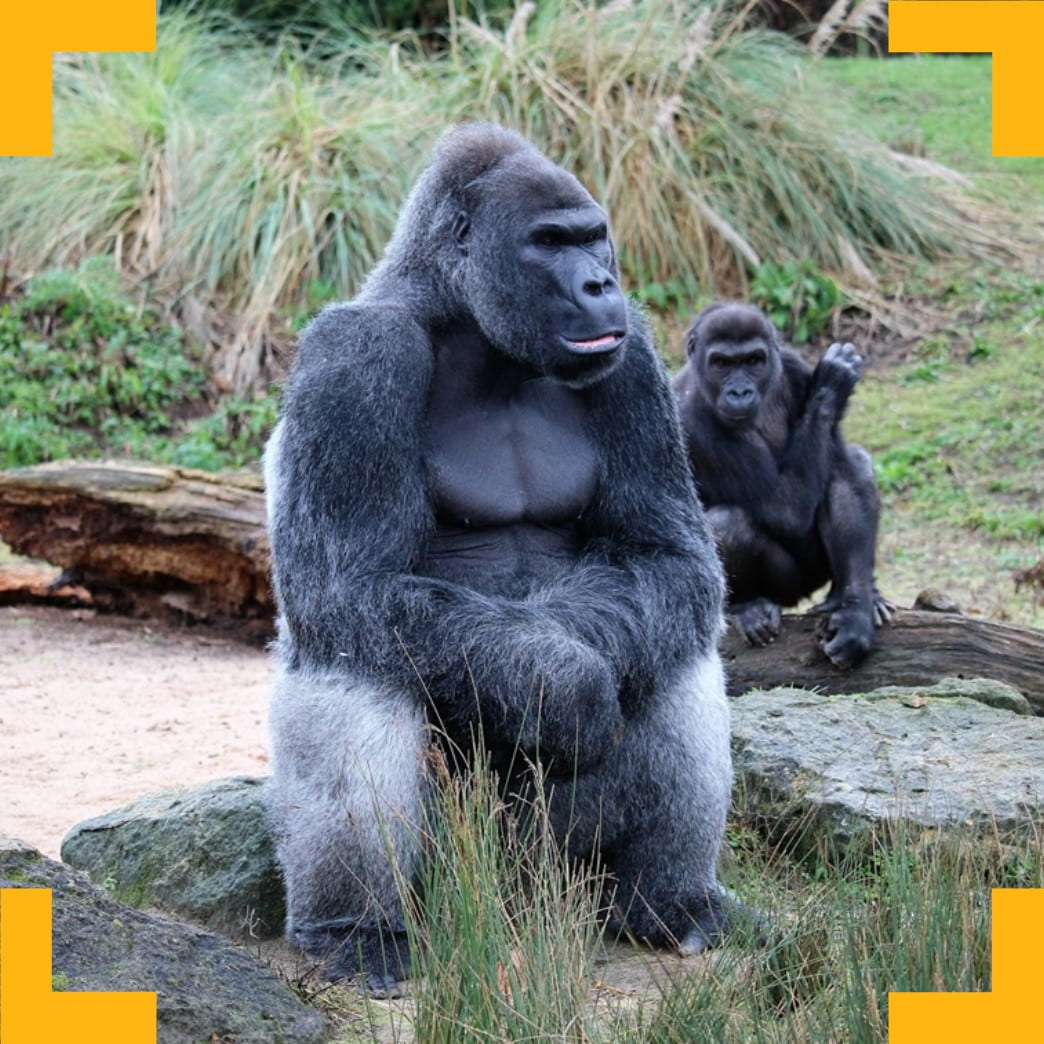Gorilla Game Lab: Designing digital/tangible cognitive games for zoo-housed gorillas
Can gorillas use computers? Can they, and perhaps other non-human animals, reach a state of ‘Flow’? Could cognitive game-play positively impact their well-being in zoos?

When living in captivity, all kinds of animals can thrive when engaging with cognitive challenges. Although the gorillas at Bristol Zoo had rich social lives, the team wanted to provide them with a stimulating and rewarding game that not only promoted play, but also gave them more choices and control in their environment.
A core question of the project revolved around the human state of ‘Flow’. We have all experienced Flow at some point. It refers to the positive psychological state of pleasure and satisfaction we experience when we’re fully absorbed in a task. The team wondered: is Flow available to non-human animals? At the time of the project’s conception, this question had not yet been fully explored.
What did the project involve?
While a comparison with human experience had inspired the team, they felt it was extremely important to create a game specifically for gorillas; not simply an adaptation of the games humans use. Working with the zookeepers, the team discovered that these gorillas responded well to tactile sensation, so that formed the basis of the final game design.
As non-verbal animals, Flow needed to be measured by the gorillas’ behaviour. Constant monitoring was not possible for either the research team or the keepers, so Otto Brookes developed a system to automatically detect and identify the individual gorillas. Through this system, it became possible to gather data on which gorillas were engaging with the game, and for how long.
The project was undertaken in a series of phases:
Design Phase: Understanding gorillas and their environments
The project began by gaining a better understanding of the gorilla participants, their environment and the long-term implications of the project through consultation with field experts, including keepers, primatologists and other experts at the zoo and from the University. This was accompanied by a rigorous ‘gorilla-centred’ participatory design process, whereby ‘design probes’ were deployed and assessed in order to directly address the cognitive and anatomical capabilities of gorillas.
Prototyping Phase: Game design and creation
The researchers undertook an iterative and rapid prototyping approach based upon the findings from phase one. This stage involved higher fidelity product design work around a single game idea. The final iteration (the completed game) aimed to go beyond basic engagement by encouraging play and facilitating Flow state.
Animal well-being assessment
Gorilla well-being was assessed during each presentation described above, by measuring their behavioural responses to the game: engagement duration and level, how long they ‘persevere’, how they respond to success, failure and rewards, if they ‘play’ with the game, and what behaviours are replaced (for example being inactive) while gorillas are using the tasks.
Gorilla’s participation with the game was entirely voluntary, access to normal food and management conditions was not restricted, and the team avoided training animals to facilitate game-play.
Who are the team and what do they bring?
- Stuart Gray (Computer Science and Centre for Innovation and Entrepreneurship) explores tangible user interfaces in children through the use of ‘serious games’ and ‘cognitive training’.
- Peter Bennett (Computer Science and Creative technologist) is a researcher and designer of novel human-computer interaction.
- Fay Clark (Bristol Zoological Society) is an animal welfare scientist well-known within the UK and US zoo communities for her work on large-brained mammals. She began her zoological career working on dolphin cognition, and for her doctoral research, Fay designed cognitively challenging ‘puzzles’ for chimpanzees and dolphins.
- Katy Burgess (Experimental Psychology) has expertise in human and animal learning and reasoning.
- Kirsten Cater (Computer Science and Centre for Innovation and Entrepreneurship) works with a diverse range of users to create novel and interactive technologies to enhance people’s experiences.
What were the results?
The gorillas game lab system is a box with 12 modules, each containing a maze-like game element.
Each of the blocks can be rotated and have new bits put in, which (like a Rubiks cube) allows a vast range of different permutations from a limited number of simple elements.
Watch a two-minute discussion from the research team here:
As the project developed, it gained interest from more students and academics. Three Masters students have developed their own projects to support Gorilla Game Lab, and a PhD project emerged from the research. Two new researchers have established a relationship with the Zoo off the back of this project, and continue researching gorilla behaviour as a result.
Beyond the university, the project spoke to a variety of audiences. Academic publications Frontiers in Psychology and the journal from the Animal-Computer Interactions conference both featured articles on the team’s findings. An article also appeared on the DevDiscourse site. Elsewhere, the New York Post and Reuters were intrigued by gorillas’ ability to cheat at games, not unlike humans.

